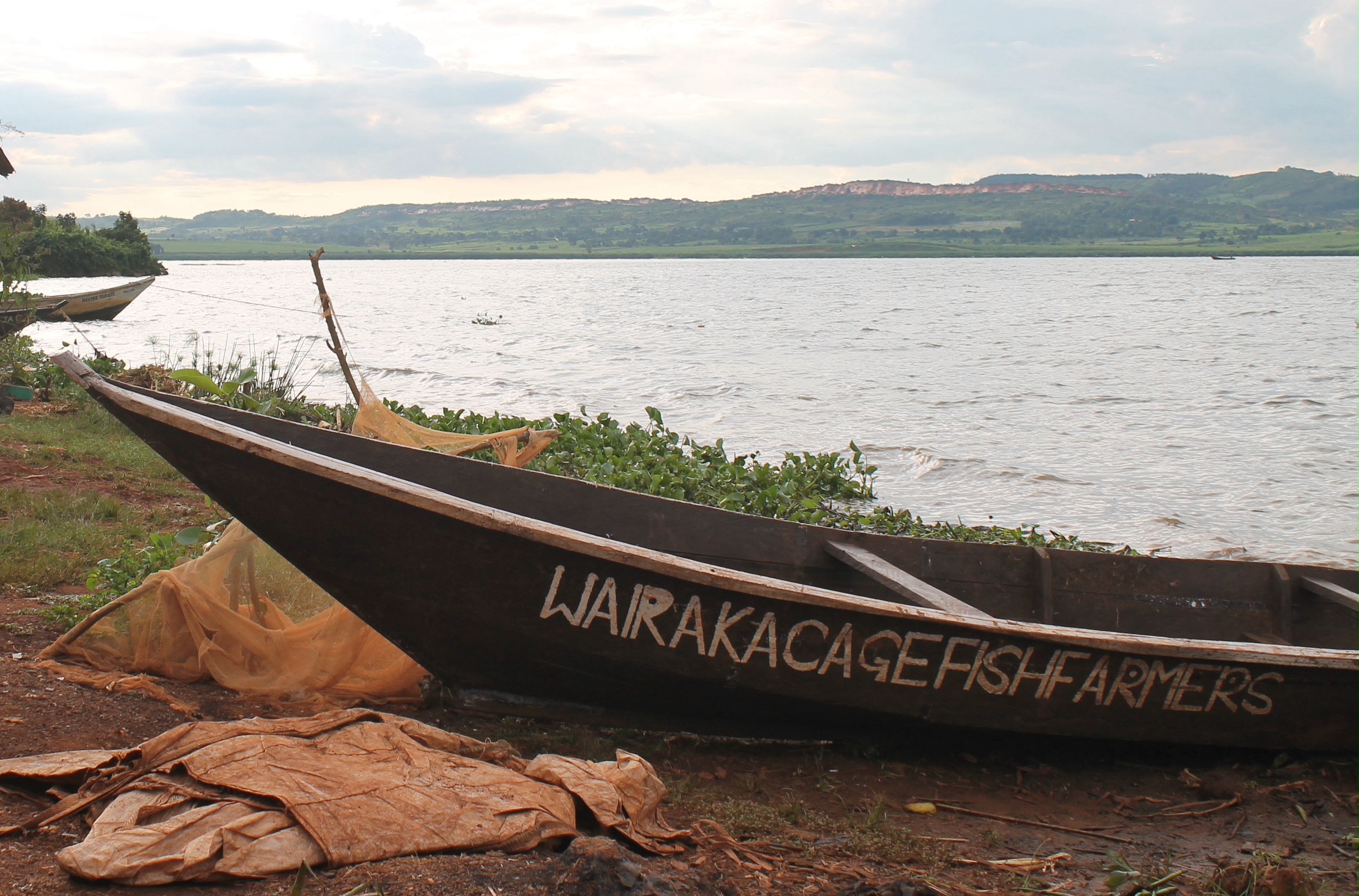Cage fish farming could be the future
in East Africa
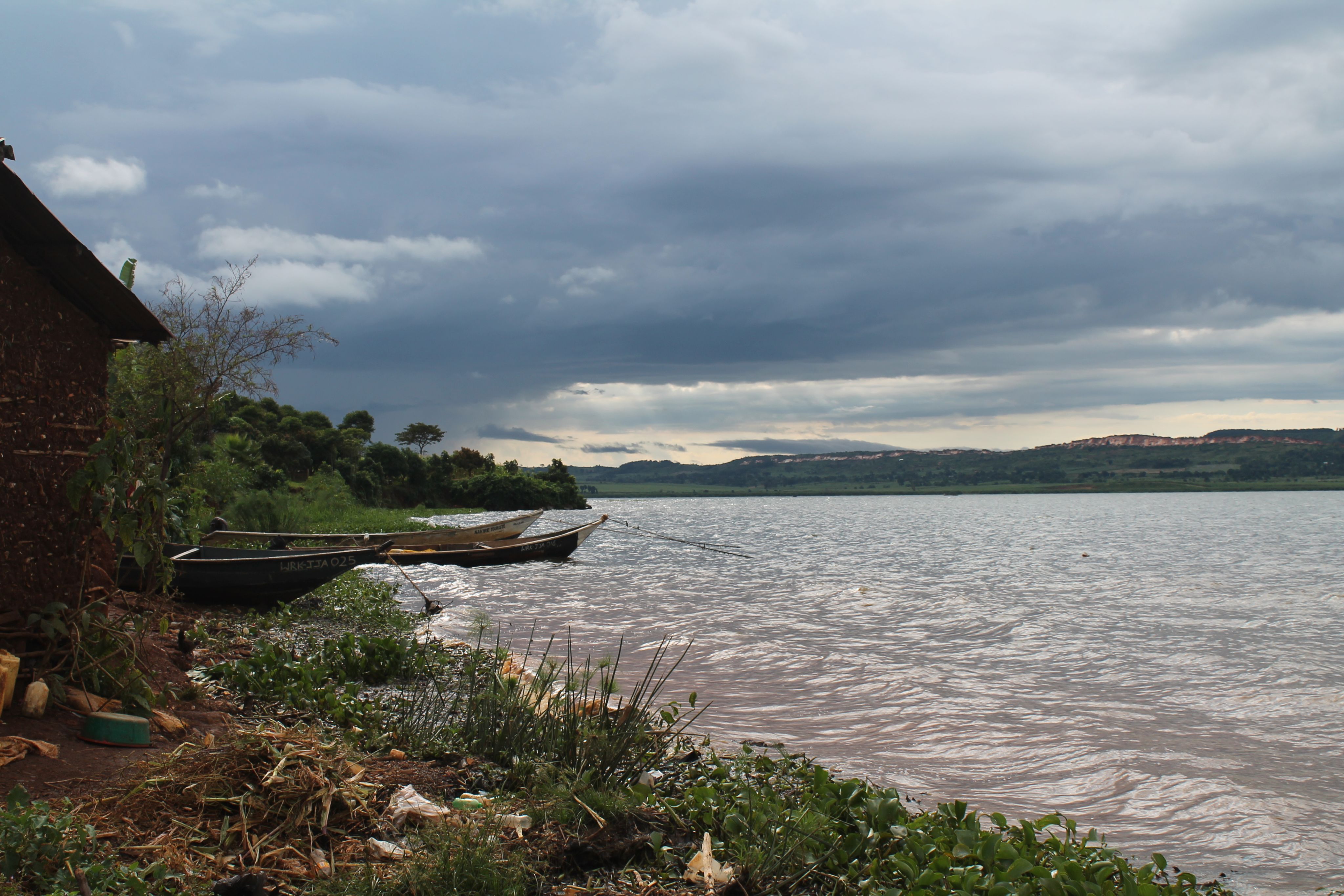
As dark storm clouds roll over hills on the eastern side of Uganda’s Lake Victoria, Bumba Musasizi steers his fishing boat to the marshy shore of Africa’s largest inland body of water. Having set out before dawn to see what God has tangled in the nets he laid the previous afternoon, it is now nearly 10 a.m.
He cuts his engine and drifts into the landing site, approaching the community of Wairaka. The long wooden vessel, which requires constant bailing out due to a persistent crack, slows to a stop silently in the bright green weeds.
“Two fish,” he announces, a paltry showing for the 25 nets it took him and a fellow fisherman nearly an hour to lay overnight, and he and another companion more than three hours to haul out of the water this morning.
This community is home to 325 fishermen, living in wooden homes topped with corrugated metal roofs and concentrated on the packed red soil that gently slopes from the dirt road down to the water. They have been getting smaller and smaller catches when previously it was common to net 20 fish in one night.
“This is the situation now,” says Musasizi, father of an infant daughter, alluding to the struggle his community has had earning a living on the lake for the past several years.
A combination of overfishing, illegal fishing, overzealous enforcement of fishing laws, and invasive species threaten their ability to catch enough to pay rent for their homes and boats — it is uncommon for fisherman in Wairaka to have their own boats — and other basic expenses. Musasizi’s nets are a year and a half old, though they should only be used for six months.
Wairaka fishermen who have lived off the lake for decades say they can no longer afford to buy new nets, boats, engines, or fuel. Part of the problem, they say, is enforcement of fishing laws meant to curb overfishing and use of illegal nets, but which have now just become a way to extort fishing communities.
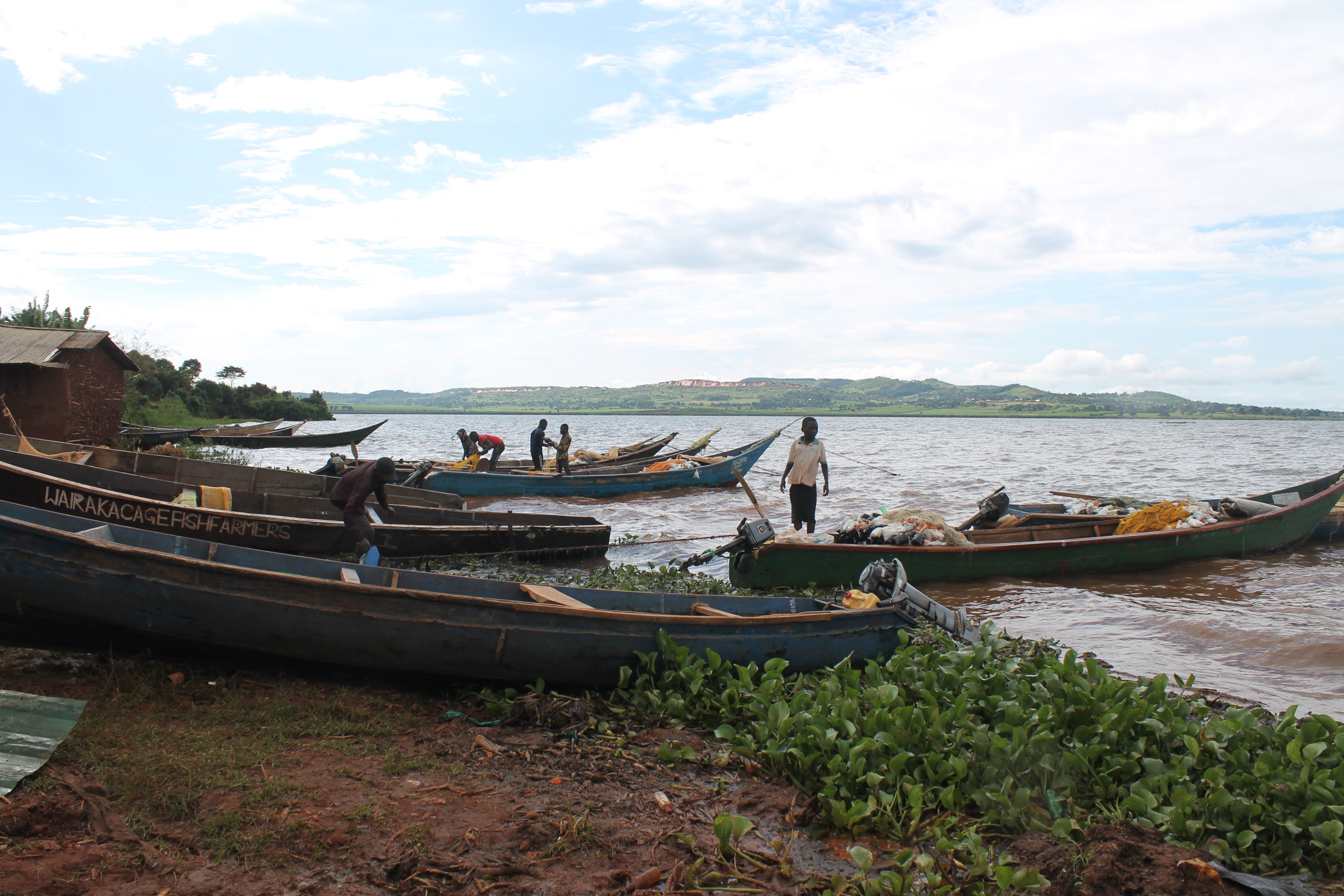
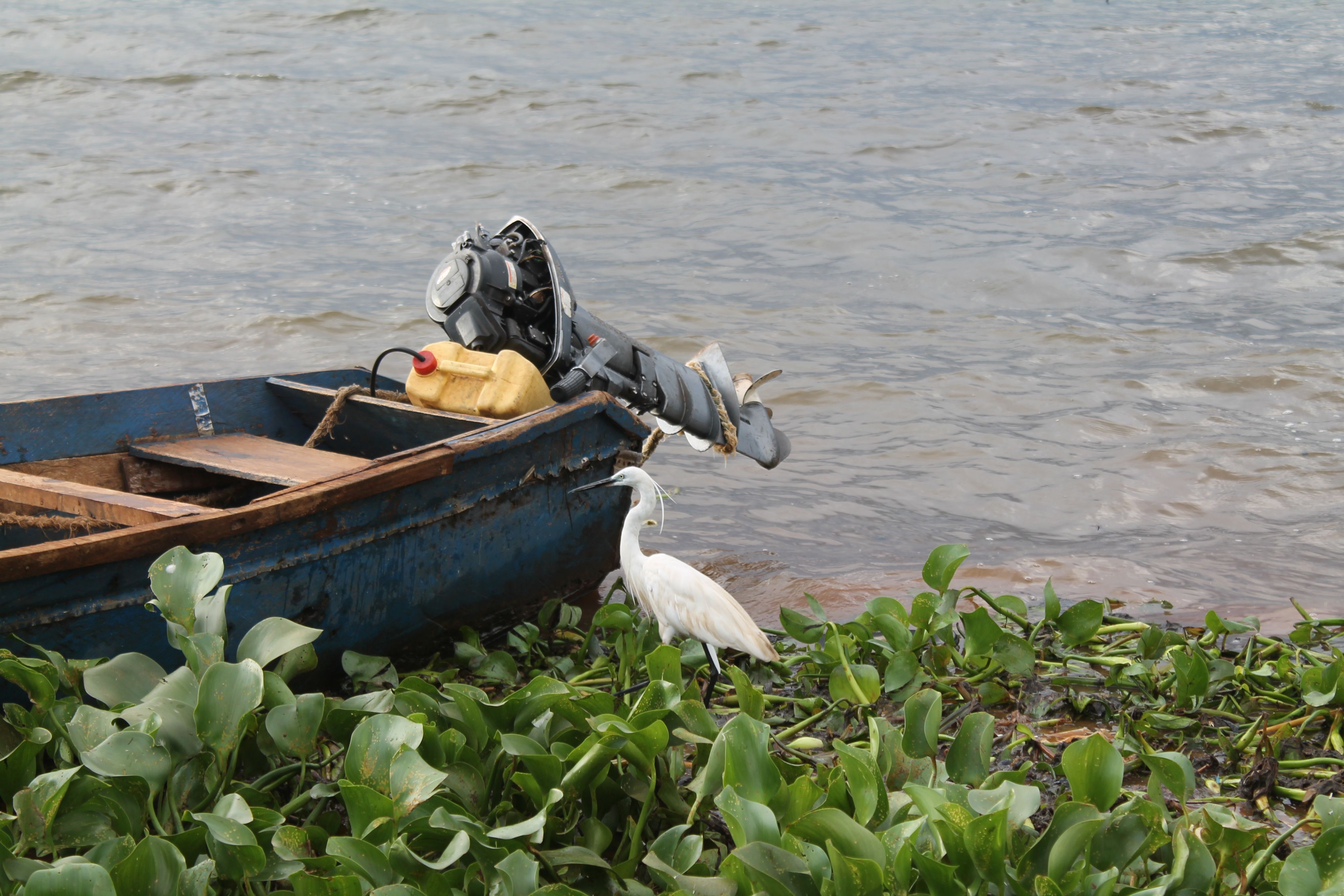
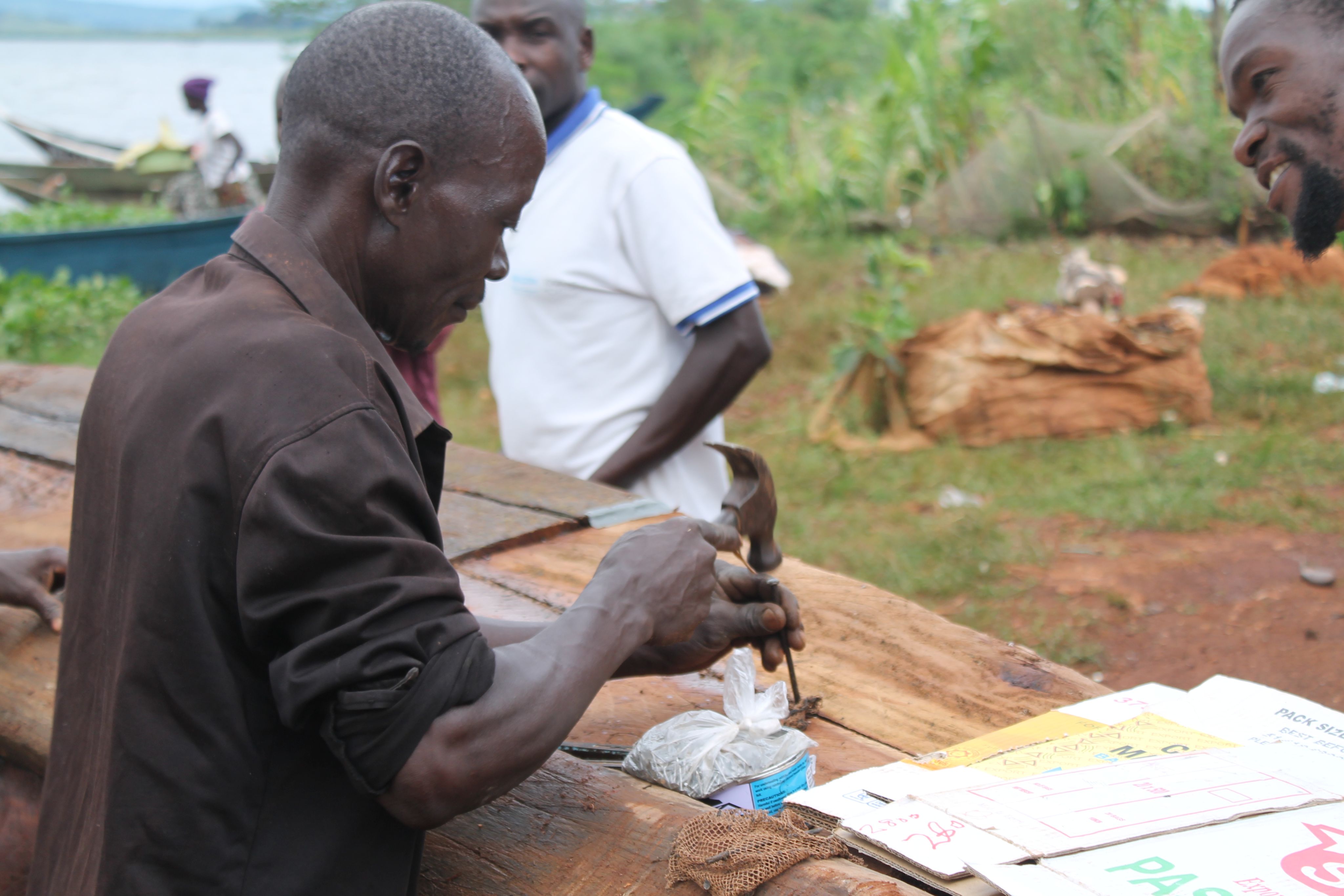
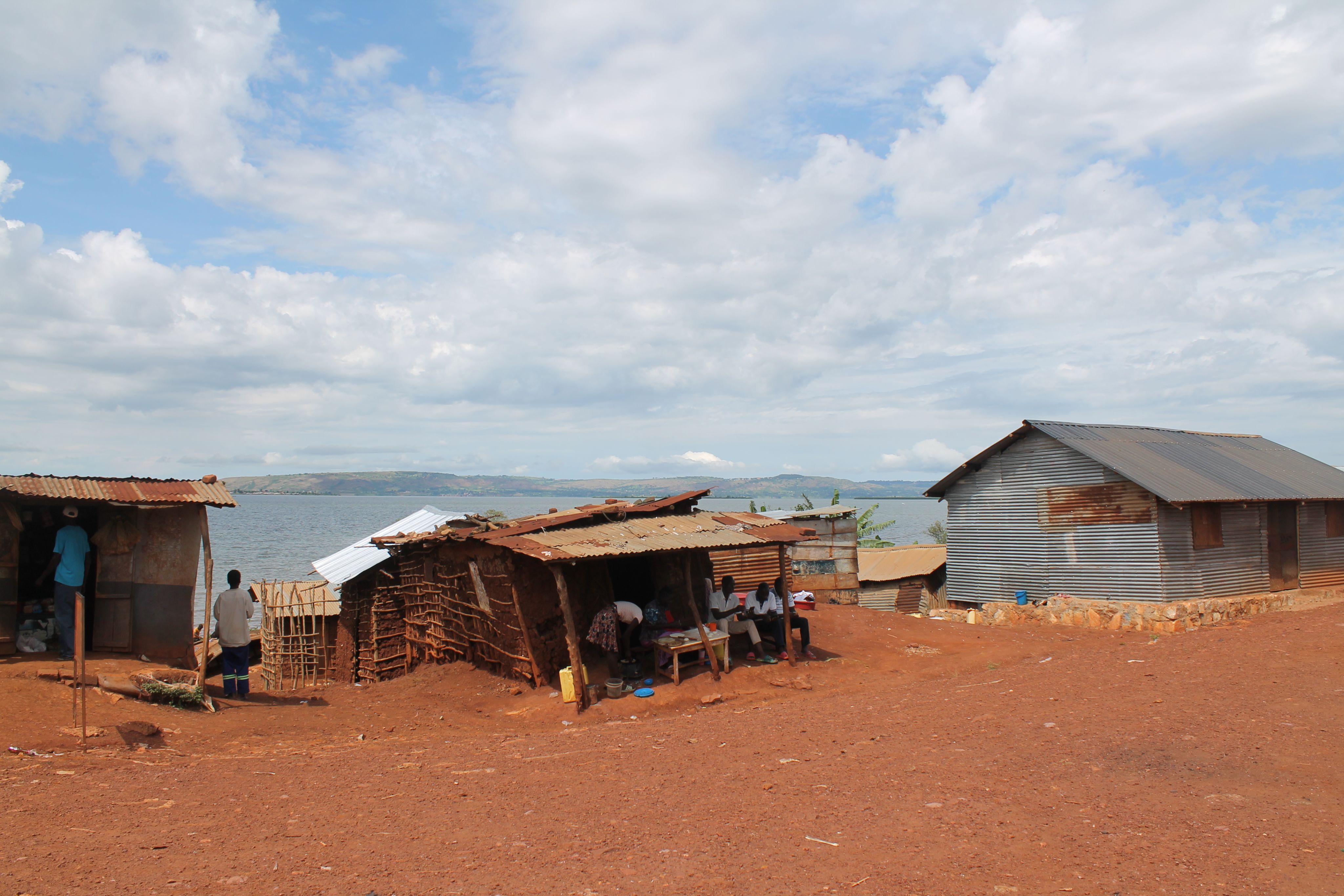
Enforcement has stepped up in recent years in recognition that illegal fishing — mostly perpetrated by commercial operations but also by desperate locals — was severely endangering the future of Lake Victoria’s fish supply. Law enforcement on the lake was remarkably effective and largely weeded out illegal nets and the catching of immature fish.
“At first they were only [confiscating] legal ones. But now, because the fishermen have changed — they’re using legal — they want to earn from them. So now even if they find you with a legal one, they still arrest you,” says Victo Biwaoye, a fisheries officer assigned to the Wairaka landing site, which she visits every day. She’s responsible for ensuring the community is “resisting bad fishing habits” and using sustainable practices.
“Even when you comply, they still want to find fault,” she adds.
Armed men regularly seize nets — even legal ones — and burn them, fishermen say, destroying a vital piece of their livelihoods they cannot replace. They regularly pay bribes to prevent their equipment from being destroyed or confiscated, and some report being detained.
Biwaoye is also responsible for providing technical guidance, and she is promoting one solution to these problems: caged fish farming. The landing site now has three cages — the first was provided by the government — and a collective group is responsible for the inputs: fingerlings, feed, and the boat required to go out to care for them.
The 20 members paid 200,000 Ugandan shillings (around $53) each to be a part of the operation, but so far they haven’t been able to afford an engine for the boat. Instead, they row out to care for the caged fish.
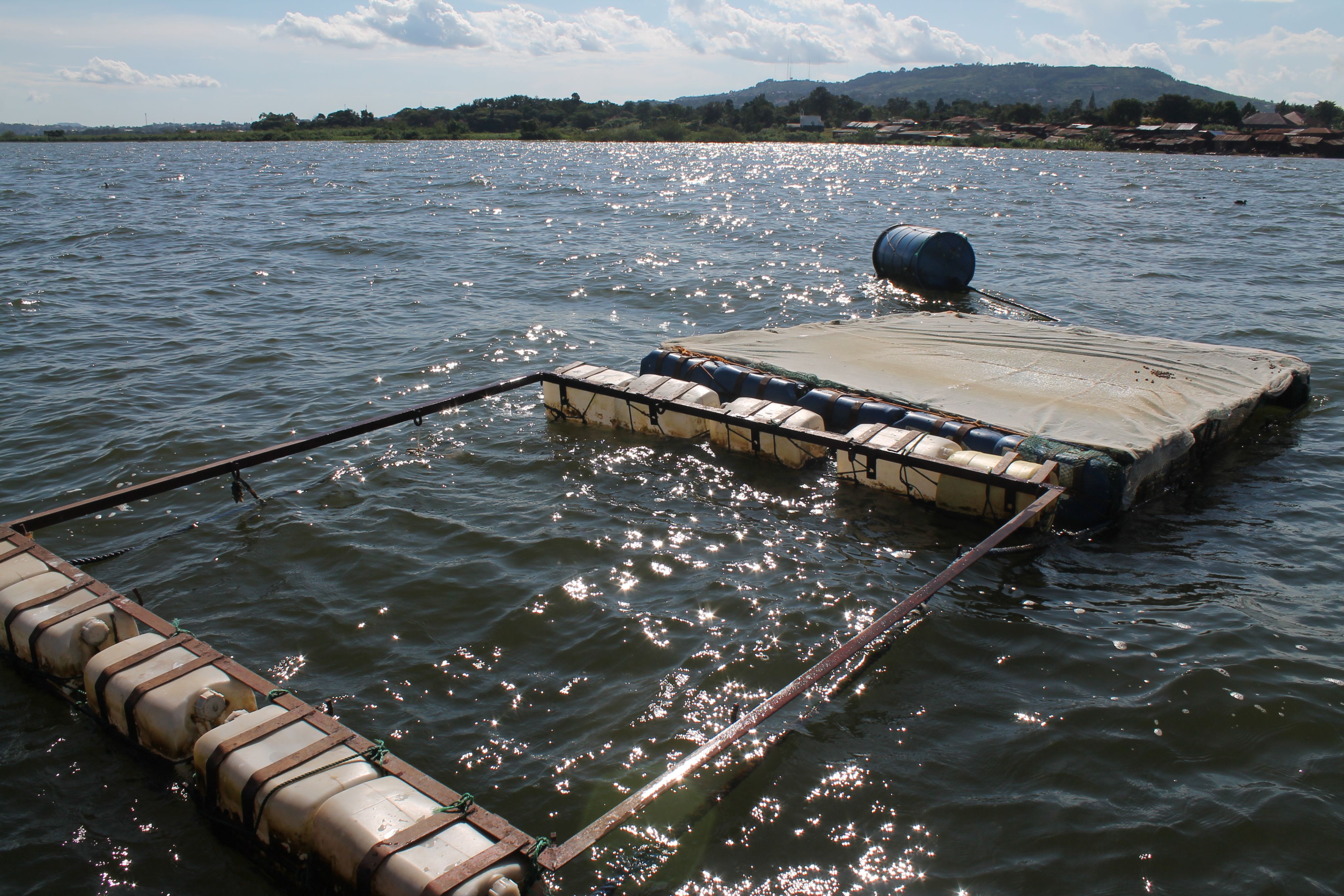
A group of fishermen from Wairaka have expanded their fish farming operation to three cages.
A group of fishermen from Wairaka have expanded their fish farming operation to three cages.
This morning, several men hover around the group’s boat as a crack is being repaired, thin strips of tin methodically nailed into the wood. Philip Eyosius, elected head of the group, says they want to gradually grow the number of cages to improve economic prospects.
“We want to create more jobs,” says Eyosius, who has two children in school. Often, households don’t have money for school fees and are food insecure because they cannot earn enough, he says.
Cages produce as much as 30 tons of fish in six months, according to Elysee Nzohabonayo, director of aquaculture management and development at the Lake Victoria Fisheries Organization. LVFO, through a project funded by the European Union and in collaboration with WorldFish and the Food and Agriculture Organization is working to expand caged fish farming in the Lake Victoria basin.
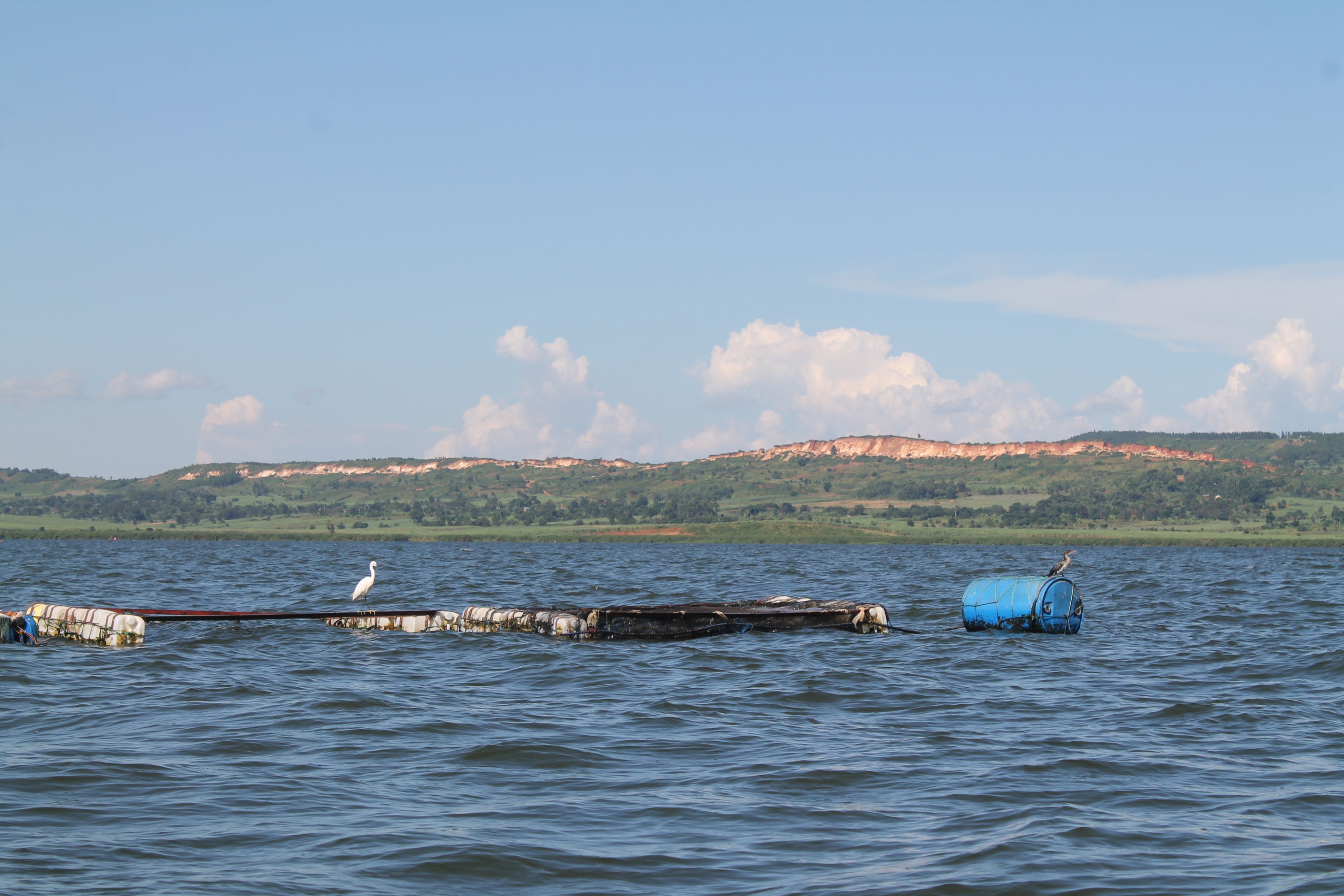
A European Union-funded project is working to expand the environment for successful cage fish farming on Lake Victoria.
A European Union-funded project is working to expand the environment for successful cage fish farming on Lake Victoria.
The project focuses on larger-scale operations, but hopes to enact a regulatory framework and safety standards that will apply across the lake.
LVFO is socializing the idea of more cages in Lake Victoria, when fish farming in the region had previously been concentrated in tanks on land.
“We had to convince the fisherman to allow the cages in the lake. Otherwise they were fighting, thinking the cages are taking their fishing ground,” Nzohabonayo says. “The cages are more productive because of the water quality and the high stocking density. Because in the cage — since the water is renewed every time — the stocking density is a bit higher than what they are stocking in the pond.”
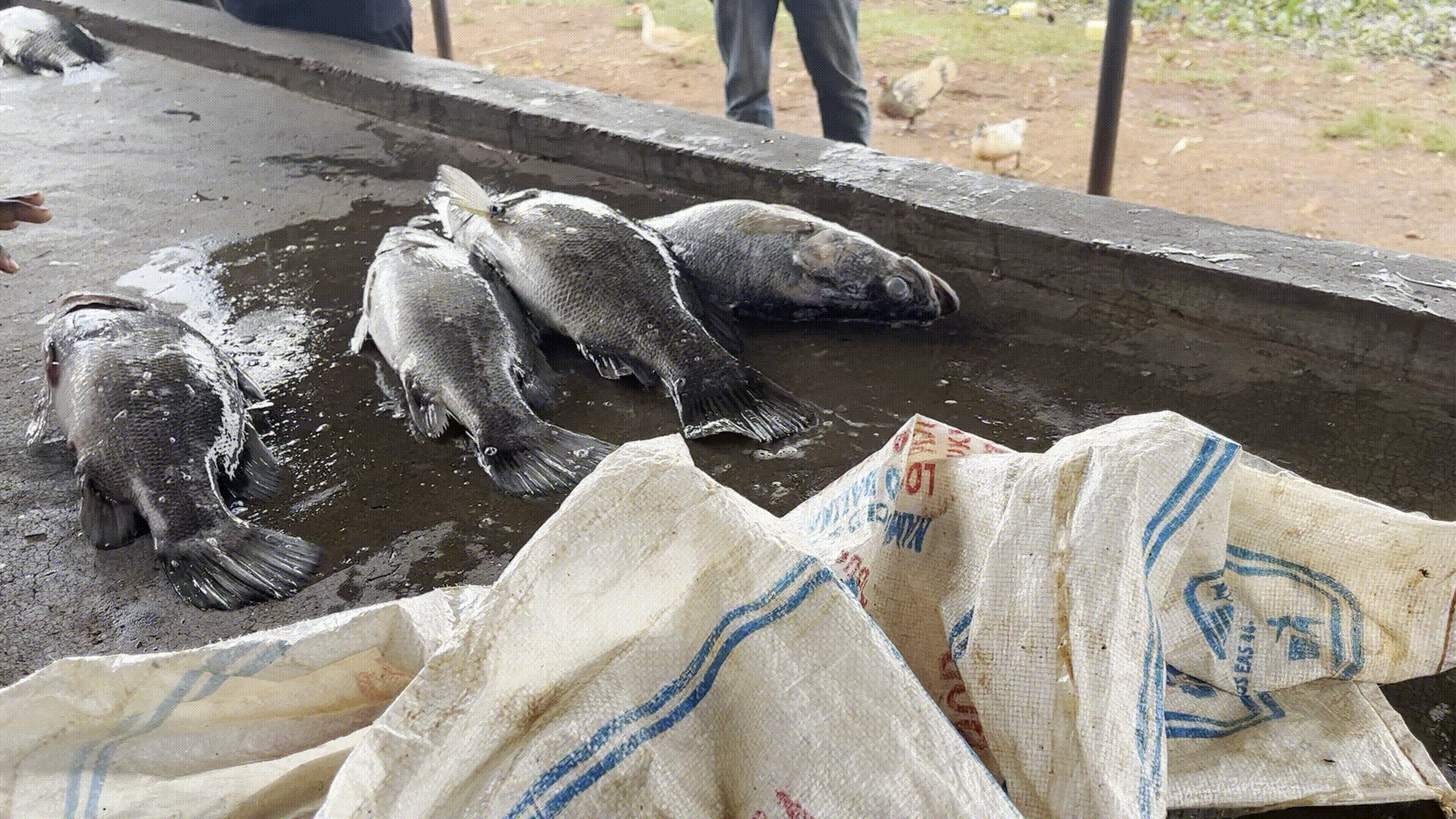
Fishmongers come to the shore in Wairaka to purchase freshly caught fish.
Fishmongers come to the shore in Wairaka to purchase freshly caught fish.
The future of caged fish farming in Wairaka is “bright,” says Biwaoye. But some in the community remain skeptical of its prospects, fearing they will spend money tending the fish — especially buying expensive feed — only for them to be snatched at night by outside fishermen. They take turns watching the cages to ensure this doesn’t happen, Biwaoye says.
Fishermen face many barriers to leaping from net fishing to the cage method. The prospect is easier for commercial operations, which already have access to some capital for aquaculture.
But even businesses with a track record can’t always secure money to purchase the cages, fish, and feed, according to Nzohabonayo.
“When you go to the farm, you just see the water, you don’t see the fish. That’s why the financing institutions are reluctant to fund that enterprise. It’s not like cattle where you can count the number of heads,” Nzohabonayo says. “Someone can tell you ‘I have 100 fish,’ yet it’s empty. We are trying to see how to connect the farmers to the financing institutions by developing a business plan for tilapia or for catfish.”
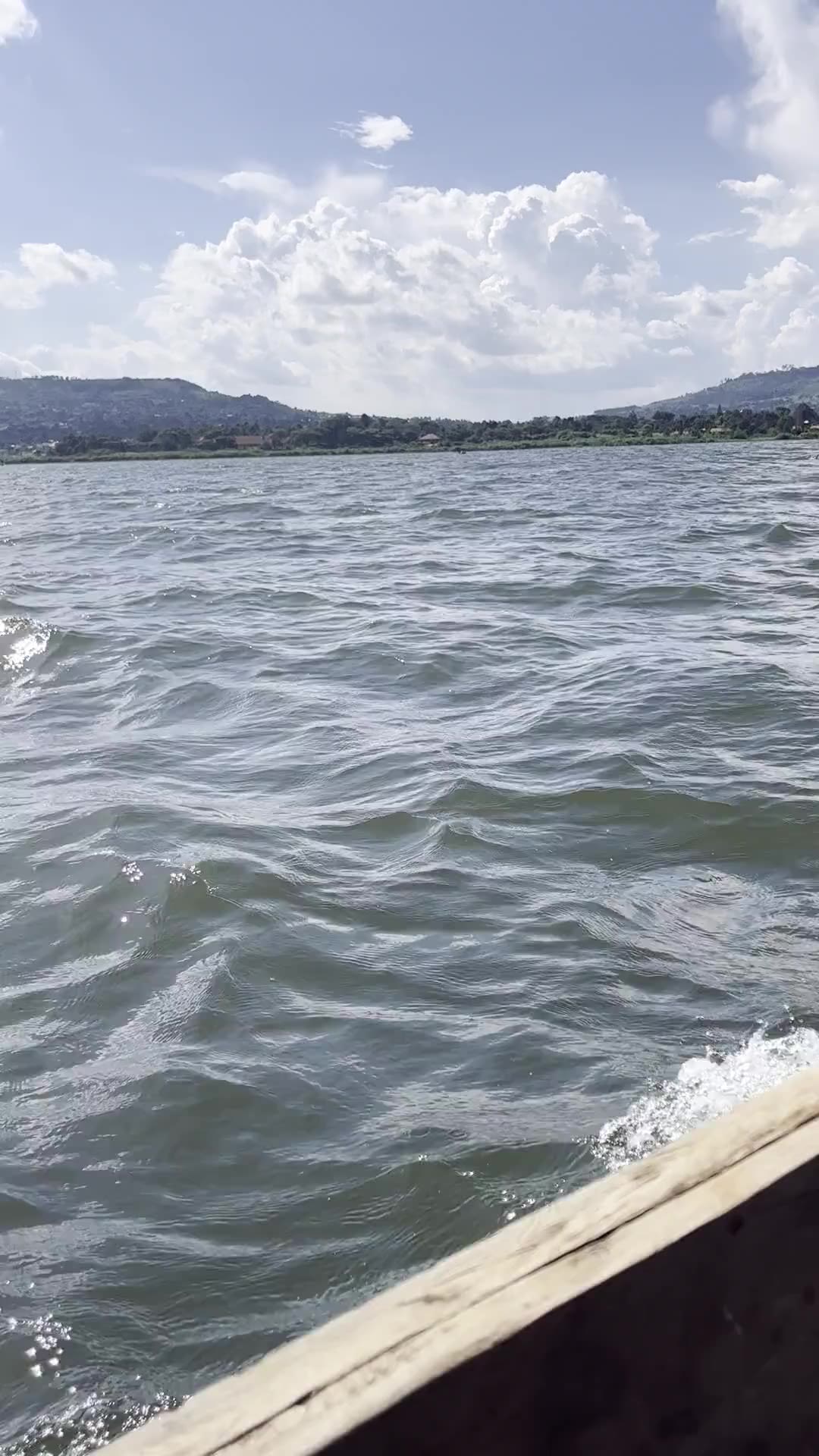
Because cage fish farming is relatively new in Uganda, most supplies are not manufactured domestically. This includes China-imported materials for the cages and feed — mainly soy, fishmeal, and maize — which comes primarily from Brazil and Egypt. There is some domestic manufacturing, but it is poor quality, Nzohabonayo says.
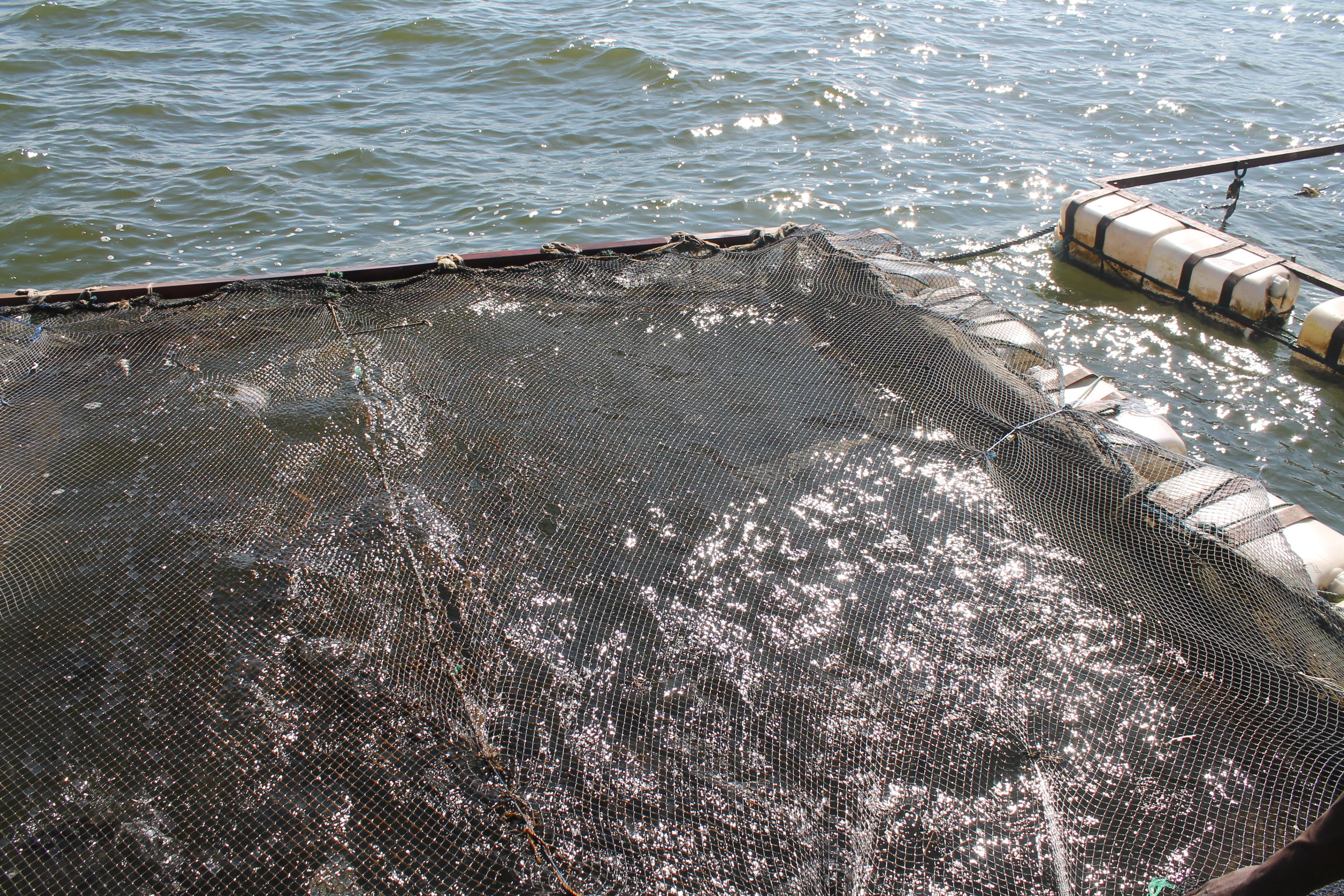
In Egypt, feed can cost as little as $0.50 a kilogram, but by the time it reaches Uganda it can be marked up to $2 per kilogram. It can account for 70% of total production cost for caged farming, Nzohabonayo says, which many cannot afford.
A key component to the success of the growth of cage fish farming is protecting the lake’s biodiversity by preventing non-native fish from escaping from cages into the lake. The extent of this happening is not known, according to Papius Dias Tibihika, a biodiversity adviser at WorldFish.
“If you have fish from captivity entering into the wild, this is likely to create negative effects on the native fish species. This can actually result in loss of biodiversity,” says Dias Tibihika, who notes the native species of tilapia in Lake Victoria are at risk of vanishing because of overfishing, habitat loss, and the introduction of non-native species.
They are conducting genetic screening research to map the distribution of native and non-native fish and determine what effect they are having on biodiversity.
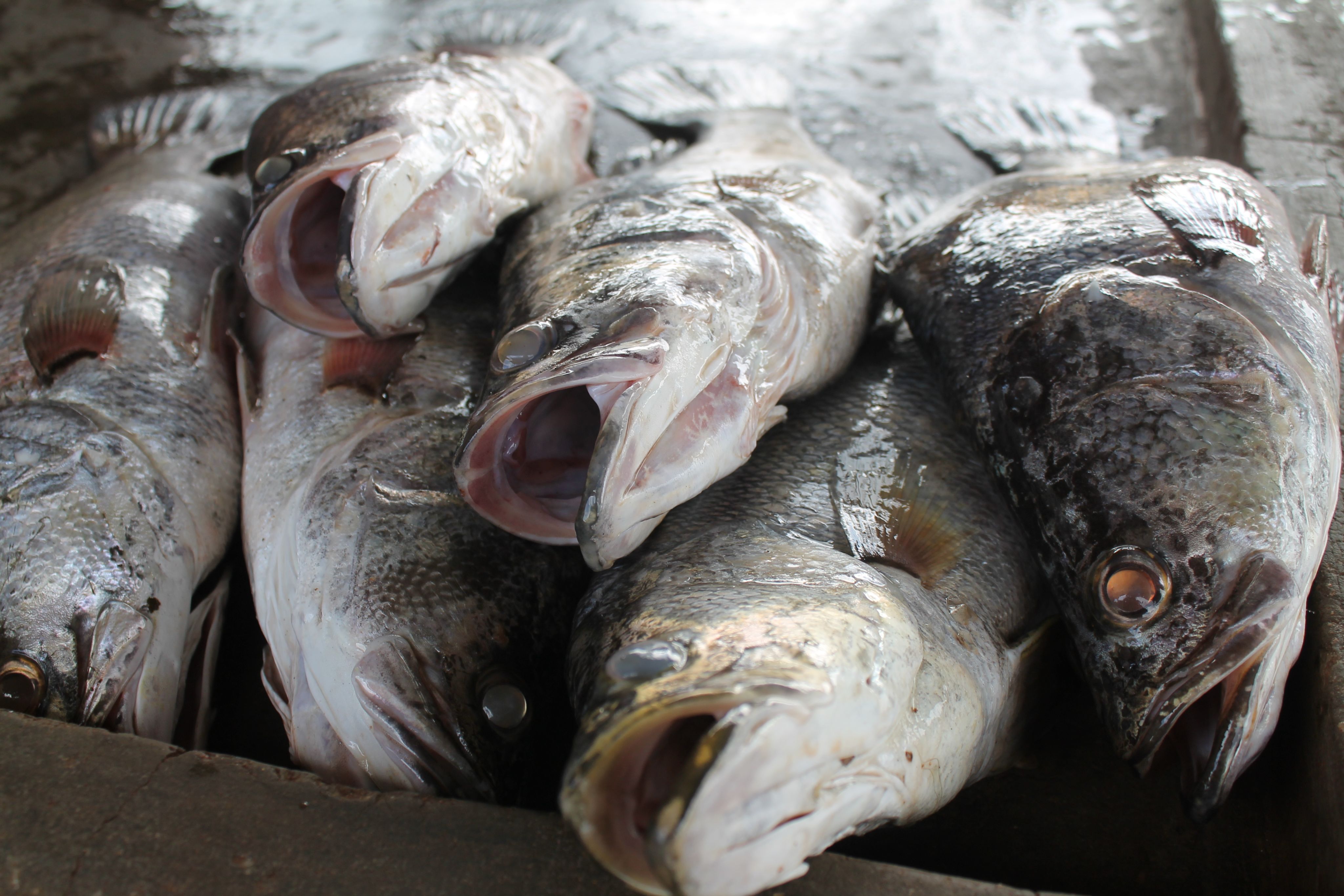
Genetic screening will help determine the distribution of native and non-native fish on Lake Victoria.
Genetic screening will help determine the distribution of native and non-native fish on Lake Victoria.
“We have high hopes that once we get this science evidence-based information it will contribute to policy formulation, and this will be key for sustainability management options of these tilapias in Lake Victoria basin,” Dias Tibihika says.
The project also wants to build local research capacity, he says, so that once the international organizations have left, communities can continue monitoring biodiversity risks in Lake Victoria.
FAO is tasked with developing a biosecurity strategy for Lake Victoria, the first of its kind in the region. The organization wants to zone the lake to determine where cages can safely be placed and not interfere with other activities, such as net fishing, transportation, and water treatment. They will also analyze how fish farming will impact other fauna and flora in the area, such as through the waste that the fish produce.

These are all factors that were examined in the social and economic analysis done by FAO, says Jose Parajua, the organization’s chief technical adviser. It’s in the Lake Victoria basin countries’ interest to maintain and improve biosecurity to safeguard the future of the lake, he says.
“In a remote community where there is not many job opportunities, if you are going to start there a new sector which is going to provide labor opportunities not only for people working on the farms but also all the assistance that big farms need … it could be seen as positive because it’ll bring some wealth to the region,” Parajua says.
In Waraika, Eyosius says the community will continue investing profits from their cages back into the small operation. It took them a year to buy the second cage with the money they made in the first, which they also used to continue buying feed and fingerlings after they sold the initial harvest. They hope to gradually increase the amount of cages they have.
“We’re trying to shift from this local fishing,” Eyosius says.
